It is said that food is ‘Purnabrahman’; for, the cells in our body get nutrition from the sattvik (Sattva-predominant) juices in the food and thereby, the body gets help to remain free from diseases. Since the body gets Chaitanya(Divine consciousness) from the universe through the medium of the nutrient juices, it becomes spiritually healthy. Let us understand sattvik process of cooking and usage of grains, pulses and legumes through this article.
1. Achars for enriching food
with Chaitanya while cooking
Hindu Dharma has taught us how to perform various achars associated with cooking such as making chapatis, cutting vegetables, boiling vegetables, serving each item at the appropriate place in the plate, sitting in the correct manner for eating, washing the plate in a correct manner after eating, etc. in an appropriate manner. All these acts are an attempt by the Hindu Dharma to free the common man from the attacks of negative energies.
Till some years ago, cooking would begin only after smearing the floor with cow-dung, performing puja (Ritualistic worship) of the chulha and offering oblations of rice grains in its fire. This custom attracted vibrations of Deities towards the food. Individuals that ate such a food would benefit at the physical, psychological and spiritual levels. Cooking food on chulha helped in creation of the sanskar (Subtle-impression) of the pure Agni in the firewood in a subtle form on the food. When this food is eaten,this Agni gets established in the voids of the body and helps in the ignition of the jatharagni. Today, barring a few houses in villages, cooking on a chulha has been forgotten. Firewood has been replaced by kerosene,LPG (Liquid Petroleum Gas) and electricity (For example- microwave oven). The process resulting from the use of these modern fuels or cooking equipment generates a Tama-predominant environment, to which negative energies are attracted. This pollutes the food, leading to increase in the negative energy attacks on the individuals that eat this food. If it is not possible to use chulha for cooking, then cooking while chanting the Name of Upasyadevata(Deity of worship) and having a bhav(Spiritual emotion) that ‘I am preparing food for God’ will help in preventing the attacks of negative energies. Besides,cooking with a bhav that ‘I am preparing this food as a Naivedyafor God’and chanting the Name of our Upasyadevata while cooking also helps.Only when spiritual measures such as chanting God’s Name, purifying the kitchen in the beginning by sprinkling water mixed with Vibhuti (Sacred ash), beginning the cooking after praying to the Deity of worship and Shri Annapurnadevi are given prominence as part of spiritual practice, we get help for the food to become Purnabrahman, meaning becoming completely enriched with Chaitanya.
In the earlier times, water used to be stored in a copper vessel or a pitcher. Brass utensils were used for cooking.These metals/alloys attract as well as transmit Chaitanya. Such spiritual benefits are not obtained from the use of prevalent utensils made of stainless steel or aluminium. On the contrary, there is every possibility of formation of a covering of distressing energy over the food or grains stored in the utensils made of such metals/alloys.
Today, hundreds of cookery books are available in the market. They contain various recipes. These books give no consideration to preserving and enhancing sattvikta (Purity)in the food while cooking. Hindu culture stresses not only on the ingredients of diet being sattvik, but the process of cooking being sattvik too.
2. Characteristics of various types of grains
- Grains contain 6 to 12% proteins, 1 to 5% fats and 60 to 70% carbohydrates.
- Though grains have lesser proteins than pulses, higher intake of grains in daily diet supplements necessary amount of proteins.
- Generally, grains used for cooking are a year old. Grains that are less than a year old are difficult to digest. After three years, grains lose taste and hence, should be discarded.
| Rice | Finger millet | Millet | Wheat | Sorghum | |
|---|---|---|---|---|---|
| Main component | Sattva | Sattva-Raja | Sattva-Raja | Raja-Sattva | Raja |
| Effect of the tridoshas | Correct balance | Predominance
of kapha(Phlegm) and pitta (Bile) |
Predominance ofkapha and vata (Gas) | Predominance
of vata |
Predominance
of vata andpitta |
| Active nadi(Energy channel) | Sushumnanadi | Chandranadi | Chandranadi | Suryanadi | Suryanadi |
| Temperament | Calm | Content | Ambitious | Fickle | Impulsive |
| Effect on functioning of Panchapran (Five vital energies) in the body | Increase in the flow of pranavayu
(Oxygen) |
Increase in the
functioning of apana-vayu |
Increase in the
functioning of udana-vayu |
Activation of
samana-vayu |
Increase in the
functioning of vyana-vayu |
| The Shakti (DivineEnergy) that gets activated upon eating | Dnyanshakti
(Energy of knowledge) |
Dnyanshakti | Dnyan–Kriyashakti
(Energy of action) |
Kriyashakti | Ichhashakti
(Energy of will) |
| Deity Principle that gets attracted to the subtle-vayu concealed in the seeds | Shiva | Shri Vishnu | Datta | Shri Durgadevi | Brahma |
| The touch of subtle-air | Cold | Cold | Hot | Hot | Warm |
3. Method of preserving the stock of
household grains from the spiritual perspective
A. Keep a sattvik Name-strip of any
Deity near the stock of household grains !
Today, the extent of formation of distressing energy covering has increased everywhere. Therefore, it affects the food-grains in the house too. In order to avoid formation of such covering, keep a sattvik Name-strip of any Deity near the grain stock. The food-grain will imbibe Chaitanya from the Name-strip and will benefit all those who eat the food prepared from these grains. Similarly, wave a sattvik incense-stick around the stock once a day.
B. Mix a pinch of Vibhuti obtained
from burning incense-stick in the grain stock.
C. During vastushuddhi, pray to Shrikrushna
for creation of a protective sheath around the
premises, equipments in the house, foodstuff and water.
4. Purifying grains
A. Winnowing of grains
During winnowing, effort is made to congregate the Raja-Tama-predominant waves from the grains into the void-like space of a winnowing basket.Additionally, unwanted constituents are thrown out during this process. In the void of a winnowing basket, predominance of Raja component is more than the Tama component. Tama component is just adequate for giving grossness to the respective waves.Therefore, Raja-Tama-predominant waves from every substance kept in the sifting fan get attracted to the void of the sifting fan and congregate there, thereby purifying the grains subtly partially due to the contact with the air during the process of winnowing.
B. Washing grains and after
drying, grinding them in a stone-grinder
Winnowing does not entirely purify the grains subtly; hence, earlier there was a practice of washing grains, drying them and then grinding them in a stone-grinder. When grains are washed with water, the Raja-Tama-predominant waves in them get transferred to water. Further, by drying them in sunlight, the remaining distressing vibrations get destroyed by theTej(Absolute Fire Principle) in the sunlight. Such purified grains are then ground and charged with more pure and positive vibrations generated by the clockwise movements of the hands to produce the flour. The food prepared from grains thus processed is very sattvik. When an individual grinds on a stone grinder while bending, the panchaprans at its navel get activated and its Suryanadi is awakened. This nadi provides complete protection to this process of grinding against the attacks of Raja-Tama-predominant vibrations in the environment through the medium of the movement of the hands.
5. Methods of using grains
Man has been using fire since the ancient times to cook grains, roast them, make puffed grains, etc. In the Holy text on economics by Koutilya, several ways of using grains are mentioned. They are –
- Kuttaka-karma, meaning, using them after pounding.
- Pishta-karma, meaning, using them after making flour.
- Saktu-karma, meaning, using them after roasting.
- Taila-pidan, meaning, using them after extraction of oil.
6.Season favourable for
sorghum and millet to be part of diet
A. Sorghum : Sorghum has a soothing effect on the body;hence, eat it during summers.
B. Millet : Millet has warming effect on the body; hence, eat it during winters.
7. Difference between the
crops harvested in Bharat and overseas
Bharat is more Sattva-predominant than other countries.The sattvikta in the environment and the soil here makes the crops tastier.
| Crops harvested overseas | Crops harvested in Bharat | |
|---|---|---|
| Method of farming | Scientific | Traditional |
| Use of chemicals | Yes | No |
| Sattva component | Less | More |
| Sanskar created by theenvironment on the food | Tama-predominant | Raja-Sattva-predominant |
| Divine protection | Absent | Present |
| Taste | Hardly any taste | Tasty |
8. Pulses and legumes
- Pulses play an important role in rebuilding the wear and tear of the body.
- Pulses contain 20 to 24 percent proteins, 1 to 5 percent fats and 55 to 60 percent carbohydrates.
- Pulses of green gram and lentil are easy to digest and generate relatively less gas than other pulses.
- Generally, pulses are devoid of essential amino acid ‘methionine’ (After digestion, proteins disintegrate into subtle amino acid particles); hence, pulses are used along with grains.
- Another name for black gram is ‘mash’; meaning, equivalent to meat (in protein content).
According to the science of Spirituality, eating meat increases the Tama component. However, black gram is considered equivalent to meat because of its high protein content and not from spiritual perspective. If a vegetarian individual becomes protein deficient, black gram or dishes prepared from black gram such as idli are an excellent supplement.

 Realise the power of water and make full use of it
Realise the power of water and make full use of it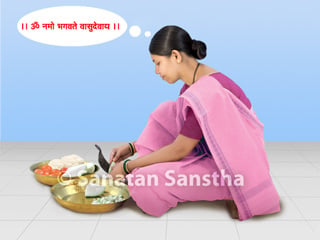 Importance of love for others and spiritual emotion for God while cooking
Importance of love for others and spiritual emotion for God while cooking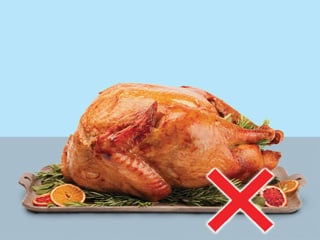 Effect of cooking non-vegetarian food
Effect of cooking non-vegetarian food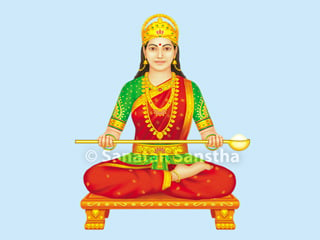 Shri Annapurnadevi
Shri Annapurnadevi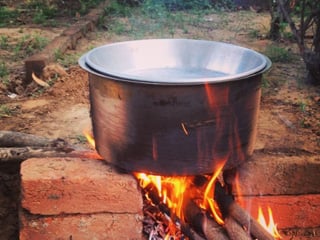 Conducts related to cooking and preparation of food
Conducts related to cooking and preparation of food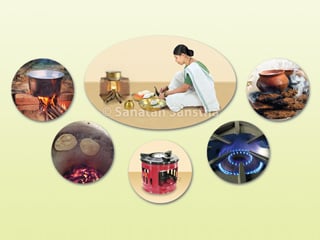 Methods of cooking, appliances, their benefits and harm
Methods of cooking, appliances, their benefits and harm